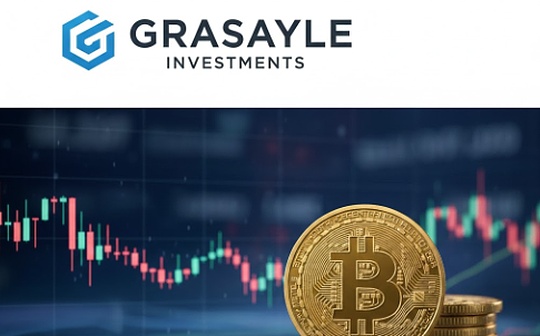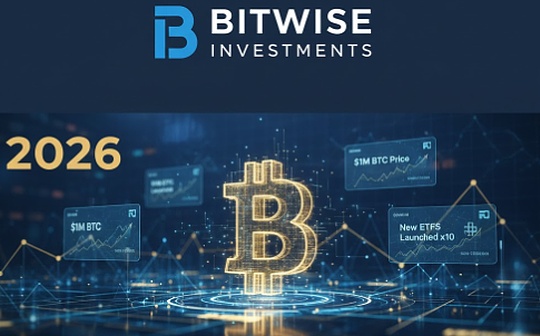
Author: taxdao
1. Background of the Hong Kong Government Stable Currency Supervision Policy
1.1 Definition of stablecoin
Stablecoin is a special asset in the cryptocurrency market. Its main characteristic is that its value is linked to the legal currency or other assets, so as to maintain its relatively stable value. The International Clearance Bank (BIS) defines it as “value valueDifferent from traditional cryptocurrencies (such as Bitcoin), which are linked to the legal currencies or other assets, stable coins are designed to avoid drastic fluctuations in prices by anchoring fiat currencies or other assets.The birth of stablecoins provides a relatively stable value carrier for the cryptocurrency market, especially in the field of decentralized finance (DEFI). It has brought liquidity and stability to scenarios such as chain transactions and loans.
Stable currency can be roughly divided into three types according to its anchor mechanism:
French currency mortgage stable currency: Such as USDT, USDC, and use the US dollar and other fiat currency as a mortgage to maintain a 1: 1 exchange relationship with the US dollar.
Crypto asset mortgage stablecoin: For example, DAI, ensure stability with over -mortgaged encrypted assets.
Algorithm stable currency: For example, ampleForth, the supply volume is automatically adjusted to keep the price stable.
The rapid development of stable currency in the world shows its huge potential in terms of payment, cross -border transactions and financial instruments. As of 2024, the market value of stablecoin has exceeded 300 billion US dollars, and the transaction volume has reached tens of billions of dollars per day, of which of which, of which, tens of billions of dollars per day, of which, of which tens of billionsAs the world’s most popular stablecoin, USDT (Tether), its market value accounts for nearly 70%of all stablecoins, becoming an absolute leader in the stabilized currency market.
1.2 International Stable Coin Regulatory Background
Internationally, the supervision of stablecoins is becoming stricter.In 2021, the US Ministry of Finance publicly called for strong supervision of stablecoins, emphasizing its systemic risks in the payment system.EssenceAt the same time, many countries have also begun to study the launch of central bank digital currency (CBDC), which to a certain extent form a competitive relationship with stable currency, but the role and usage scenario of the two are different.In emerging markets such as Southeast Asia and the Middle East, stable coins have brought new opportunities for cross -border payment and financial inclusiveness. Many people without bank accounts have participated in the global financial market through stable coins and improved their economic liquidity in these regions.
1.3 Mainland China and Hong Kong Stable Coin Regulatory Background
The Chinese government is relatively cautious about stable currency.Since 2017, the People’s Bank of China has emphasized the strict regulatory attitude towards virtual currency, and further strengthened its crackdown on cryptocurrency transactions and mining in 2021. Although the People’s Bank of China has been promoting the application of digital RMB (E-CNY)However, the attitude towards overseas stablecoin is still strict, and stablecoin is considered to affect China’s currency sovereignty and financial security. Therefore, when considering cross -border payment, it is more inclined to promote digital RMB led by the government.
As a special administrative region, Hong Kong has adopted different regulatory strategies compared to the mainland, and it is more inclined to provide a certain space for virtual assets. Its relatively loose virtual asset supervision has attracted a large number of encrypted enterprises and innovative projects.This year, JD.com’s subsidiaries have also joined Hong Kong’s regulatory sandbox to see that mainland companies’ interest and trust in Hong Kong’s virtual asset policy in Hong Kong.In fact, as early as 2018, Hong Kong began to gradually introduce regulatory policies on virtual assets; in 2019, the Hong Kong Securities Regulatory Commission (SFC) issued regulations on virtual asset trading platforms and fund management, which clarified the requirements of virtual assets.With Hong Kong’s new era of virtual asset supervision; in 2023, Hong Kong officially launched a license system for virtual asset service providers (VASP), which further clarified the regulatory framework for virtual asset trading platforms and service providers. The system requires virtual assetsService providers must obtain licenses to operate legally in Hong Kong. At the same time, strict KYC (understanding customers) and AML (anti -money laundering) and other compliance requirements.This article will focus on Hong Kong stablecoin and combing and analyzing its regulatory system and policies.
2. The evolution of stable currency supervision of Hong Kong
Since 2022, Hong Kong has gradually promoted the regulatory framework for the issuance of stable currency. Its core goal is to ensure the transparency and safety of the issuance of stable currency, and lay the foundation for the healthy development of the virtual asset market.The following is the time sorting out about the evolution of the supervision and evolution of the stabilization currency of Hong Kong:
2.1 2022: Preliminary discussion and consultation
In January 2022, the Hong Kong Financial Authority (HKMA) released the “Capital Assets and Stable Coin Discussion Discussion Documents”.The document pointed out that with the rapid development of crypto assets and stablecoins, the existing payment system and storage payment tools (such as electronic wallet) supervision frameworks are not enough to cover all types of stablecoins.To this end, HKMA proposes the necessity of priority supervision of payment stable coins (such as USDT and USDC) linked to fiat currency, and eliminates the priority of supervision of non -asset mortgage types such as algorithm stabilization currency.In the document, HKMA also invited the relevant industries to express opinions, feedback on the discussion documents before the end of March 2022, as an important basis for the design of the future regulatory framework.
2.2 2023: Gradually clarify the regulatory framework
In 2023, HKMA accelerated the specific regulatory system for stable currency.In December, HKMA and the Financial Services and Treasury Bureau (FSTB) jointly released legislative suggestions for the supervision of stable coins issuer, put forward a specific draft of the regulatory framework.This framework not only comprehensively regulates the behavior of issuance and management of stable currency, but also detailed the requirements of the management, corporate governance, risk control, information disclosure, and anti -terrorism financing of stable currency reserves assets.
Among them, it is particularly noteworthy that the framework of the reserve assets is required to ensure that all stable currency issuers must ensure that the stable currency in its circulation has 100%reserve asset support and set up independent account management of these reserves assets.In addition, the issuer must regularly disclose the reserve of stable coins to the public.
2.3 2024: Legal promotion to the public consultation
Entering 2024, Hong Kong further promoted the legislative process of stabilizing currency regulatory framework.In January 2024, HKMA issued a consultation document, proposed more detailed regulatory measures, and for the first time in the document, the definition of the Fiat-Referenced Stablecoins (FRS).French currency, goods or other financial assets are linked, and the issuer needs to register in Hong Kong and obtain a regulatory license.
The document also puts forward specific requirements for the issuer of stable currency issuers, including the lowest capital requirements (such as HK $ 25 million), and the issuer must set up entities in Hong Kong to ensure that the local management structure meets regulatory requirements.In addition, non -Hong Kong -registered issuers must also abide by Hong Kong’s regulatory regulations if they want to sell their stablecoins to the Hong Kong public.The implementation of this system has gradually made Hong Kong gradually become one of the center of global virtual assets and stabilized currency issuance activities.
In order to help the emerging currency projects and enterprises smoothly transition to the new regulatory framework, HKMA also proposed the regulatory sandbox system of stable coins issuer.This system allows enterprises to communicate with HKMA for communication supervision requirements before actual issuance, and obtain preliminary guidance and supervision to ensure compliance operations.This measure not only encourages innovation, but also provides flexibility for the compliance development of stablecoins.
3. Detailed explanation of the regulatory system of fiat currency linked to Hong Kong
The regulatory system of Hong Kong’s Fiat-Referenced Stablecoin (FRS) is an important policy framework proposed in Hong Kong to ensure the stability, transparency and compliance of the virtual asset market.This regulatory system not only defines what FRS is, but also sets clear applicable objects, applicable conditions and a series of regulatory requirements for its distribution.
3.1 Regulatory objects and concept explanations
In Hong Kong, the entity of all stable coins linked to fiat currency (such as the stable currency linked to Hong Kong dollars and the US dollar, etc.) needs to apply for a license to HKMA. Even internationally issuers, as long as (1) its stable currency is issued in Hong Kong, itEither (2) linked to Hong Kong dollars, or (3) its products to promote marketing to the Hong Kong public, they also need to follow the regulatory requirements of Hong Kong.
According to Hong Kong’s proposal, the definition of FRS includes the following core elements:
Digital form value of encrypted protection: FRS is protected by distributed ledger or similar technology encryptionDigital form valueEssence
Stable value: FRS needs to be linked to a fiat currency (or a basket of assets) and maintains relatively stable value.Products that maintain value through the supply and demand mechanism of algorithm stabilization may be difficult to meet this requirement.
use: FRS is used as a payment tool, an investment tool or a debt clearing tool.
Various types of stablecoin, regardless of whether its stability mechanism is based on fiat currency reserves, as long as it claims to maintain stability, it is necessary to comply with the regulatory system.
3.2 Conditions and regulatory requirements for issuing stablecoins in Hong Kong
Issuing stablecoins in Hong Kong needs to meet strict regulatory conditions, which mainly include the following aspects:
Financial resources requirements: FRS issuer needs sufficient capital, and the minimum capital payment requirement is HK $ 25 million, which ensures that the issuer can have sufficient capital buffer when dealing with market fluctuations.In addition, the issuer also needs to ensure that the stable currency in circulation has reserve assets corresponding to its face value, and these assets must be highly flowing and the risk is low. Reserve assets must be stored independently in regulatory financial institutions.
Governance and risk management: The issuer must have a sound corporate governance structure to ensure that its internal control and risk management mechanism are effective.The issuer needs to implement annual risk assessment, including technical risk, security control, anti -fraud measures, etc.In addition, FRS issuers also need to meet the requirements of the Anti -Money Laundering and Counter -Terrorism Financing Regulations to ensure that its system can monitor transactions and prevent financial crimes.
Reserve asset management: The issuer needs to ensure that all issued stable coins have sufficient reserve asset support. Reserve assets must be corresponding to the legal currency linked to stable coins, and reserve assets must be disclosed to the public regularly, including the total stable currency and reserves in circulation.The market value and composition of assets.This measure aims to ensure transparency and market trust.
Forbidden to pay interest: The FRS regulatory system in Hong Kong is prohibited from paying interest to the holders of stable currency.This provision is to prevent stable coins from becoming a deposit product and prevent it from impacting the banking industry.
Localization requirements: All FRS issuers must register a company in Hong Kong and ensure that their executives and management teams are resident in Hong Kong, and they have the ability to effectively control their issued stable currency.
3.3 The specific process of issuing stablecoins in Hong Kong
To issue stablecoins in Hong Kong, first of all, the issuer needs to apply to HKMA to send cards and meet a series of strict standards, including but not limited to sufficient financial resources, sound corporate governance structures, and professional reserve management mechanisms.This process requires the issuer to submit a detailed business plan to HKMA. The book must not only outline the issuance plan of the stablecoin, including the target market, the scale of distribution, and expected use, etc.One unit of stable currency has corresponding reserve asset support and a comprehensive risk management framework to ensure that the value stability and system security of stable currency can be maintained under various market conditions.
In addition to submitting a plan, the issuer also needs to ensure that its reserve asset management system and information disclosure system meet the high standards set by HKMA settings, which means that the system must not only have high degree of security and transparency, but also to be able to be able to go in time and accurately in time and accurately.Public disclosure of key information about stable currency issuance and reserve asset status, so that investors and other stakeholders can make wise decisions.Once the card is obtained, the issuer must also follow the continuous compliance requirements, including regularly submitting a detailed operation report to HKMA on a regular basis. These reports should cover all aspects of business operations, such as financial performance, the effects of risk management measures, customer protection measures, etc.At the same time, ensure that all operations meet the requirements of laws and regulations to safeguard the fairness of the market and the interests of investors.
The issuance of stablecoins in Hong Kong is facing many challenges.Capital requirements have constituted a high threshold for many startups. The issuer not only needs to hold enough funds to support initial issuance, but also to ensure that the reserve assets are always consistent with the stable currency value of the issuance of reserves. This may require a lot of mobile funds as support.Secondly, the cost of compliance must not be ignored. FRS issuers must abide by a number of strict regulations including anti -money laundering, information disclosure and risk management, which usually means that enterprises need to invest additional manpower and material resources to establish a special compliance teamAnd system to ensure the legality and transparency of various operations.For some international issuers, localized management is also a great challenge, because companies that issue stable coins in Hong Kong must set up entities locally to ensure that management and key functional teams can operate in Hong Kong.Operating costs may also bring cultural integration and management difficulties.
3.4 Stable currency supervision sandbox system
On March 12, 2024, HKMA launched an innovative measure called the “Sand Box Plan”, which aims to provide a pilot environment for entities that intend to issue stable coins in the Hong Kong market before the relevant legislation is officially effective.The sandbox plan allows participants to test their products and services in a controlled risk environment. At the same time, it provides regulators with opportunities to observe and evaluate the operation of these new financial tools.It also lays a solid foundation for the future stable currency issuance supervision framework.
In order to ensure the effectiveness and fairness of the sandbox plan, the HKMA has not limited the specific number of participants, but sets strict standards for applicants. Applicants must show the real intention of issuing legal currency linked currency in Hong Kong.It is reasonable to plan and formulate specific strategies for participating in the sandbox plan.At the same time, they also need to prove that they have the ability to meet the regulatory requirements proposed in the consultation document, that is, they need to have a detailed business plan, a professional team stationed in Hong Kong, and enough start -up funds to cover preliminary operating costs.
For companies that want to join the sandbox plan, the application process is relatively direct. The applicant can submit the necessary document information to the HKMA through the designated email address. HKMA may require additional information to assist the evaluation.During the review process, regulators will comprehensively consider multiple factors, such as the uniqueness of the applicant’s uniqueness, the effectiveness of the price stability mechanism, the management method of reserve assets, and the protection measures for users.Even if it is successfully entered the sandbox arrangement, it does not mean that the project has been officially recognized or regulated by HKMA or other financial regulatory agencies.Once the license system of stable currency issuers is formally implemented, all sandbox participants must submit the application to obtain formal operating permits.In addition, there are certain restrictions in the sandbox arrangement itself. For example, it may control the user base and stable coin issuance quota of the participants to ensure that the risk is at a acceptable level.HKMA also reserves the right to adjust the sandbox rules according to the specific situation to adapt to the changing market and technical environment.
All sandbox participants must obtain HKMA approval in advance before they release any information about their sandbox status to prevent misleading publicity and protect potential investors from unnecessary risks.On July 18 this year, HKMA announced the list of “sandbox” participants of the stable coin issuer, namely Jingdong Coin Fangs Technology (Hong Kong) Co., Ltd.; Yuancoin Innovation Technology Co., Ltd.; Standard Chartered Bank (Hong Kong) Co., Ltd.Group Co., Ltd., Hong Kong Telecom Co., Ltd..
Taken together, the FRS regulatory system in Hong Kong is forward -looking worldwide. Its strict reserve requirements and transparency regulations ensure the stability and trust of the market.Capital and compliance costs.Through the sandbox system, enterprises can obtain necessary support and guidance to ensure that its operations meet the regulatory requirements.
4. The influence of Hong Kong Stable Currency Supervision System
As an important international financial center, its stable currency supervision system provides a stable legal framework for the global cryptocurrency market.The regulatory system in Hong Kong emphasizes the management of reserve assets. Through strong supervision, all issued stablecoins issued have 100%reserve asset support, and these assets need to be stored in regulatory financial institutions.For international companies, this means that the issuance of stablecoins in Hong Kong needs to meet high standards of supervision requirements. For example, all non -Hong Kong issuers want to push the stable coins linked to the Hong Kong dollar to the market or promote in Hong Kong.Get HKMA permission.Stable coins supported by non -assets such as algorithm stabilization currency may not be issued in Hong Kong because it is difficult to meet regulatory requirements.In addition, Hong Kong’s regulatory sandbox system provides a “controllable” environment for enterprises to help them test business models and compliance before entering the market, reduce the risk of initial operations. At the same time, it also provides Hong Kong regulatory agencies with enterprises with enterprisesEstablish more close cooperation opportunities, so as to continuously improve its regulatory framework.
As a Special Administrative Region in China, Hong Kong’s regulatory policy has formed a sharp contrast with cryptocurrency policy in Mainland China.Mainland China has a conservative attitude towards cryptocurrencies. With its status and flexible supervision of international financial centers, Hong Kong has become the bridgehead of the virtual asset business in mainland China., Explore the innovative application of stable currency and other virtual assets.This trend shows that Mainland companies are increasingly paying attention to expanding the global market through Hong Kong, and at the same time also implies that Mainland China may adjust its attitude towards cryptocurrencies in the future.The regulatory system in Hong Kong is also expected to provide a reference for the virtual asset policy of the Mainland. Its transparency, reserve management and risk control requirements in the regulatory framework provide actual reference for the future virtual asset supervision system of the Mainland.
For global cryptocurrency companies and investors, Hong Kong’s stable currency supervision system has created a relatively stable and transparent market environment. Enterprises issuing stablecoins in Hong Kong must meet high standards of reserve management and compliance requirements, which provides investors withHave more trust.At the same time, Hong Kong’s anti -money laundering (AML) and anti -terrorism financing (CFT) regulations also make the stable currency market more secure and reliable, reduce the risk of money laundering and illegal transactions, and help increase the reputation of the entire cryptocurrency market.Hong Kong also provides the company with a flexible market pathway and sandbox system. Enterprises can test their business model within a limited range and obtain guidance of regulatory agencies, thereby reducing the risk of compliance.Market opportunities have enhanced their competitiveness.
5. Conclusion
Hong Kong’s stabilized currency supervision system not only promoted innovation, but also provided security guarantee for the market.The implementation of this system will help stabilize the long -term healthy development of the currency market and enhance Hong Kong’s position in the global encryption asset field.Due to the strong currency attributes of stablecoins, the supervision of stable currency in other jurisdictions will become stricter and stricter in the future.The stable currency supervision system explored in Hong Kong also provides valuable experience for other judicial jurisdictions.
Reference
[1]. Encrypture rules and licenses: Hong Kong chapter .Web3caff
[2]. In the implementation of the legislative proposal of the stable coin issuer’s regulatory system in Hong Kong, the consultation summary .hkma
[3]. Reading the license system of the Hong Kong stable coin issuer.
[4]. The HKMA announced the stable coin issuer “sandbox” participant .hkma
[5] .hong Kong Monetary Authority Intropus Plans to regulating Stablecoins.Reed Smith In-design
[6]. Summary of encrypted assets and stable currency discussion documents .hkma
[7].







